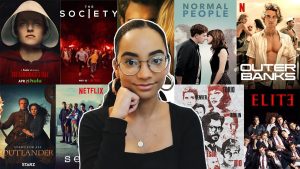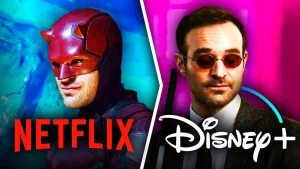
Introduction
In recent years, streaming sites like Netflix, Hulu, and Spotify have changed how we watch TV shows, movies, and listen to music. These platforms allow people to access entertainment on-demand, meaning they can watch or listen to whatever they want, whenever they want. But what impact do streaming sites have on society? In this article, we will look at how streaming services affect different parts of our lives, including culture, the economy, social behaviors, and the environment.
The Rise of Streaming Sites

Streaming sites first became popular in the early 2000s when the internet speed got faster, and people began to watch videos and listen to music online. Services like Netflix and Spotify provided an easier way for people to get content without needing cable TV or physical DVDs. With these platforms, users could watch movies or TV shows anytime, anywhere, and on any device, which was much more convenient than traditional ways of consuming media.
This change had a big impact on the entertainment world. People no longer had to watch shows at a specific time or buy DVDs. Instead, they could watch or listen to anything on-demand. The success of these platforms is what made streaming the popular choice over traditional media like cable TV.
The Role of Streaming Sites in Society
Streaming sites play an important role in modern society by shaping entertainment trends. They influence what people watch, listen to, and talk about. Shows that are exclusive to these platforms often become very popular, creating shared experiences among viewers. Streaming also gives independent creators a chance to share their work with a global audience, increasing the variety of content available.
Cultural Impact: Shaping Trends and Conversations

Streaming sites have a huge influence on popular culture. Shows like “Stranger Things” and “The Crown” get people talking, creating a shared experience among viewers. Many shows that are exclusive to streaming platforms have become very popular around the world, influencing how people think and what they talk about.
These platforms also make it easier for new voices to be heard. Independent creators and filmmakers can now share their work with a global audience. This has led to more diverse content, with people from different backgrounds and experiences telling their stories. However, while streaming sites offer a lot of variety, there is also a trend towards similar types of shows across different platforms. Many streaming services follow similar formats, which can make content feel repetitive.
Economic Impact: Changing Industries

Streaming services have had a big effect on the economy. On one hand, the demand for new content has helped create jobs for writers, actors, directors, and others in the entertainment industry. Companies like Netflix have spent billions of dollars creating new shows and movies, which has boosted the economy in many ways.
On the other hand, streaming services have hurt some traditional industries. For example, cable TV companies and DVD stores have seen their business decline as more people choose to stream content instead. Smaller companies also struggle to compete with the big players like Netflix, Amazon, and Disney.
Additionally, the streaming industry’s growth has created new types of jobs, including freelance and contract work for content creators. While this offers more flexibility for some, it also means many workers don’t have the job security that comes with a traditional, full-time job.
Social Behavior: How We Watch Content

The way we watch content has also changed because of streaming sites. People no longer have to watch shows or movies at specific times. Instead, they can watch at their own pace. The rise of “binge-watching,” or watching multiple episodes of a show in one sitting, has become very common. While this is convenient, it also means people are spending more time alone in front of a screen, rather than enjoying shared experiences with family and friends.
In the past, watching TV was a social activity. Families and friends would gather to watch their favorite shows or events together. With streaming, it’s more common for people to watch content alone. This shift has changed how we interact with others when it comes to entertainment.
Another challenge is the overwhelming number of options available. Streaming sites offer so many shows and movies that it can be hard to decide what to watch. This is known as “choice overload,” and it can make the experience of watching content more stressful than enjoyable.
Environmental Impact: The Cost of Streaming
Even though streaming seems like it has little environmental impact, it actually requires a lot of energy. Streaming content uses data centers that store and process the information needed to stream movies, shows, and music. These data centers consume a lot of electricity, and this contributes to the carbon footprint of the streaming industry.
The demand for more streaming content also means more data centers are needed, leading to more energy use. While some companies are working to make these data centers more eco-friendly, the overall environmental impact of streaming remains high, especially as more people use streaming services.
Streaming Services and Job Creation

Streaming services have helped create many jobs in the entertainment industry. With the rise of platforms like Netflix and Hulu, there is a high demand for new TV shows, movies, and documentaries. This has led to more work for writers, actors, directors, and other professionals in the film and TV industry. In addition, streaming platforms also need staff for things like marketing, technology, and customer service. As the industry grows, it is expected to continue creating new job opportunities.
The Social Impact of Streaming
Streaming services have changed the way we talk about and share entertainment. Before, if a new show or movie came out, people would watch it at different times, and spoilers were easy to avoid. Now, with the rise of binge-watching, many people finish a show in one sitting, which leads to more discussions and online conversations about the content. Social media platforms, like Twitter and Instagram, are filled with fans sharing their thoughts and reactions. This has made entertainment a bigger part of daily conversations and online communities.
Subscription-Based Services

One of the key reasons streaming sites have become so popular is their subscription model. Instead of paying for individual shows or movies, users pay a monthly fee to access all the content available. This makes streaming affordable compared to traditional TV or movie rentals, where you pay for each program separately. Subscriptions give users more freedom, as they can watch anything they want without worrying about extra costs. This model has proven to be a win for both consumers and companies.
The Growth of Original Content
Streaming platforms are also investing heavily in creating their own original content. Shows like “Stranger Things,” “The Mandalorian,” and “The Witcher” have become massive hits, drawing in millions of viewers. This has forced traditional TV networks and film studios to compete by producing more original shows and movies. As a result, there is more creativity and diversity in the entertainment industry. Streaming services are now major players in producing high-quality content, which was once dominated by movie studios and TV networks.
Global Access to Content

Streaming services have made entertainment accessible to people all over the world. In the past, many people only had access to content from their own country or region. Now, platforms like Netflix and Disney+ offer shows and movies from different cultures and languages. This has allowed people to explore entertainment from other countries and experience new perspectives. Streaming sites also help content reach a larger audience, as people from all over the globe can watch the same show at the same time.
The Problem of Too Many Choices

While having a lot of choices is usually a good thing, streaming platforms can sometimes make it hard to decide what to watch. With thousands of options available on various platforms, people often feel overwhelmed. This is known as “choice overload.” Some people spend more time browsing than actually watching shows or movies. To solve this, many streaming platforms have added features like recommendations based on what you’ve watched before. However, even with these features, it can still be hard to pick the right show when there are so many to choose from.
The Challenges of Streaming Sites
Despite their many advantages, streaming sites also face challenges. One of the main problems is the overwhelming number of options available, which can make it hard for people to choose what to watch. Some platforms are also criticized for promoting similar types of content, which can make shows feel repetitive. Additionally, streaming has a negative environmental impact due to the energy required to run data centers, which store and process the content.
The Future of Streaming Sites

The future of streaming sites looks bright as they continue to grow and evolve. New technologies, like virtual reality and interactive content, could make streaming even more exciting. However, streaming services will need to address challenges like decision fatigue, content repetition, and their environmental impact. As competition grows, these platforms will also need to find new ways to stand out and keep viewers engaged.
A Comparison: Streaming vs. Traditional Media
To better understand the impact of streaming sites, let’s compare them with traditional media like cable TV and physical media. Below is a simple table that highlights the key differences between the two:
| Aspect | Streaming Sites | Traditional Media |
|---|---|---|
| Content Access | On-demand, watch anytime. | Fixed schedules, watch at set times. |
| Cost | Subscription-based, often cheaper than cable. | Cable subscriptions and individual rentals are more expensive. |
| Content Variety | Huge variety, with many genres and languages. | Limited variety based on TV schedules. |
| Viewing Experience | Personalized, based on what you watch. | Curated by channels or networks. |
| Social Aspect | Mostly individual viewing. | Encourages watching with others (family, friends). |
| Availability | Available globally, on any device. | Limited to specific regions and devices. |
Conclusion
Streaming sites have dramatically changed how we access and consume entertainment. They have made it easier for people to watch or listen to content on their own time and from anywhere. Streaming has influenced culture, the economy, and how we behave socially. It has also made it easier for diverse voices to be heard in the entertainment industry.
However, there are some downsides to this shift. Streaming has led to a decline in traditional TV and DVD sales, changed how we interact with others, and contributed to environmental concerns. The growing number of streaming options can also create decision fatigue, making it hard to choose what to watch. As streaming continues to grow, it is important to understand these impacts and find ways to balance the benefits with the challenges.










